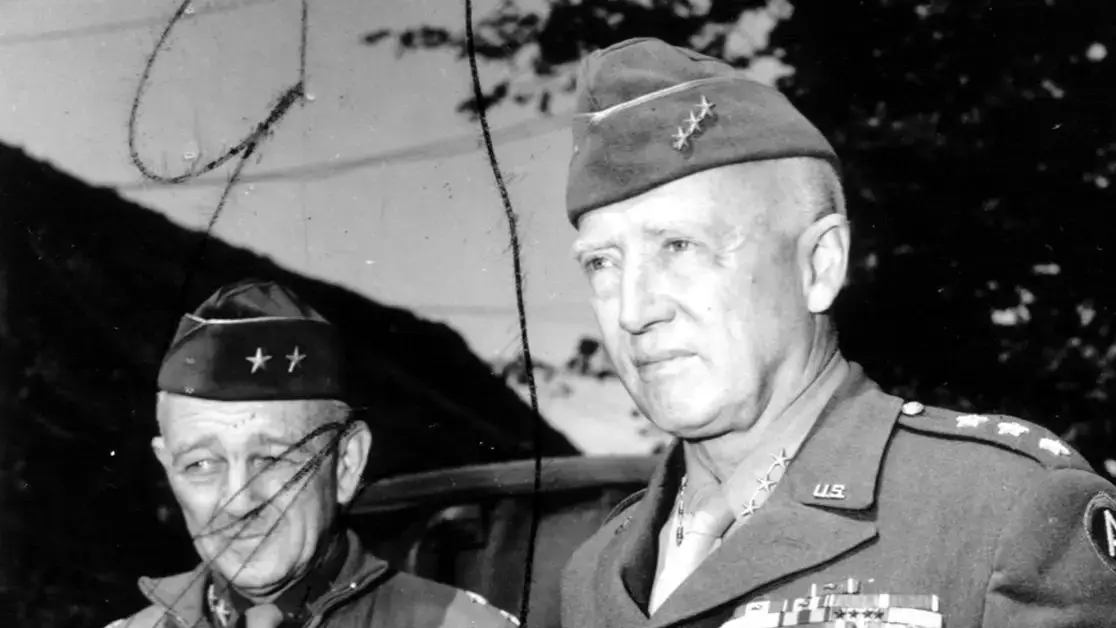This is how Patton smashed his way out of Normandy

SUMMARY
When Allied troops landed in Normandy, General George Patton had two jobs. One had been to lead the fictional First United States Army Group, a part of Operation Fortitude, to deceive the Germans as to the Allies' actual intentions against Normandy. His second was training his real unit, Third Army.
Once the Allies had secured a beachhead, Patton took Third Army to Northern France where it became operational on August 1, 1944. By the time Third Army went into action, the Allies had spent nearly two months fighting for a breakout to no avail.
The thick Norman hedgerows and stiff German resistance had slowed progress to a crawl. Patton had other ideas.
Following on the heels of Operation Cobra opening a path, Patton turned Third Army "east, west, and south behind the German lines and went looking for trouble."
As Third Army broke free of the restrictive hedgerows, Patton showed that he was truly a master of maneuver warfare and combined arms tactics.
Patton would use armored reconnaissance scouts to range ahead of his forces to find the enemy. Once found, he used his armored divisions to spearhead the attacks. Armored infantry, supported by tanks and self-propelled artillery, would attack in force.
Every breach in German lines was exploited by more armor which kept the Germans from being able to effectively regroup.
Patton also pioneered the use of tactical air support, now known as close air support, by having tactical fighter-bombers flying cover over his advancing columns. This technique is known as armored column cover and used three to four P-51s or P-47s, coordinated by a forward air controller riding in one of the tanks on the ground.
Patton's Third Army headquarters also had more staff dedicated to tactical air support and conducting air strikes against the enemy than any other formations in Europe.
Making the best of these new techniques, much like the Germans had with the Blitz, Patton's first moves were to drive south and west to cut off the Germans in Brittany and open more ports on the coast to Allied shipping.
Using speed and aggression, Third Army had reached the coast in less than two weeks.
Those forces then turned around 180 degrees and raced east across France.
Patton's forces moved so fast that normal tactics were insufficient.
Light aircraft that normally served as artillery spotters were pressed into the airborne reconnaissance role.
To keep up with his troops, the 4th Armored Division's commander, Maj. Gen. John Wood, would often task one of his aerial artillery observers, "Bazooka Charlie" Carpenter, to fly ahead to his armored columns so he could personally deliver orders.
Carpenter was famous for mounting bazooka's on his light aircraft and attacking German armor – just the kind of fighting man Patton wanted in his army.
As Patton's troops pushed east, they continued to drive the Germans back. Along with actions by the Canadians and Poles to the north, they were beginning to form a pocket around the German Army Group B.
The neck of the pocket was closing at Falaise, which was held by the Canadians. Patton was driving his men hard to effect a link-up and trap Germans attempting to retreat from Normandy.
Much to Patton's dismay, Gen. Omar Bradley, commander of the Twelve US Army Group, called him off. Due to the fact that his forces were fighting the Germans all over Northern France, Patton could only commit four divisions to blocking German escape to the south. Bradley was worried that stretching Patton's line further could lead to him being overrun by German forces desperate to escape the trap.
As Bradley would put it later, "I much preferred a solid shoulder at Argentan to the possibility of a broken neck at Falaise."
Undeterred, Patton consolidated his forces and continued his drive out of Normandy.
With the Germans retreating from the area, Patton set his Third Army to give chase.
Depleted German units were easily overcome.
The 82nd and 101st Airborne Divisions, recalled to England the month before, lamented that Patton continually overran their drop zones and kept them out of the action.
On August 25, 1944, the 4th Infantry Division, a lead element of Patton's Third Army, arrived at the outskirts of Paris. Allowing the French 2nd Armored Division to take the lead in the liberation of their capital, the division moved into the city.
Just five days later, Operation Overlord, the Allied invasion of Northern France, was declared over.
Patton, however, was not done. He had his eyes set on Germany and continued to push his forces.
As Third Army drove hard towards the French province of Lorraine, they finally outran their supply lines. On August 31, Patton's drive ground to a halt. Patton assumed that he would be given priority for supplies due to the success of his offensive, but was dismayed to learn that this was not the case.
Eisenhower favored a broad front approach and allocated more incoming supplies to Montgomery for his bold plan – Operation Market Garden.
Despite their success in defeating German units all across France and driving further than any other force, the men of Third Army would have to wait for their chance to drill into Germany.
SHARE
